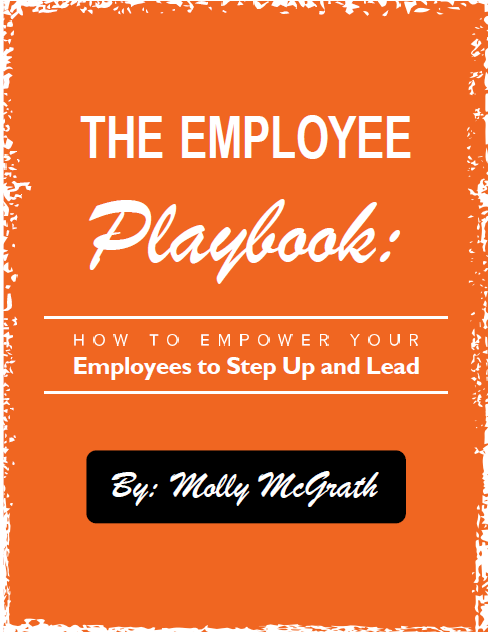One of the scariest things a bu siness owner deals with is a cash flow crisis. Not only do you have the practical matters of a cash flow crisis stressing you out, like payroll to meet and rent to pay, but you have the confidence-crushing uncertainty of WHY your cash flow tanked.
siness owner deals with is a cash flow crisis. Not only do you have the practical matters of a cash flow crisis stressing you out, like payroll to meet and rent to pay, but you have the confidence-crushing uncertainty of WHY your cash flow tanked.
It’s very common for us to get SOS panic calls from business owners, or their team, because they are having a cash flow crisis. Ninety-nine percent of the time, when we ask to look at their tracking (number of referrals, number of new appointments, etc.) the first problem becomes apparent. The universal reason for the crisis is that they have stopped tracking their numbers and inspecting them in their weekly team meeting.
A cash flow crisis is rarely a surprise and can be eradicated, or at least minimized, if you consistently, unrelentingly track your numbers. You never have to “wake up one day” and find that revenue is in the toilet. If you are tracking and looking, you will know when the slowdown is coming. You can head it off if you start identifying what is causing the slowdown (leads and/or conversions) and correct it in real time.
The “slowdown” isn’t real. More accurately defined, it’s the “we weren’t paying attention” aftermath.
If you have a cash flow crisis, the first thing to do is start tracking and then dig into your tracking every single week, without fail. Sometimes we see people tracking these big end results but not the in-between steps. If your sales process has multiple steps (and it should), track the conversion of each step.
How many leads came in? Who was the referral source? What was the conversion from initial contact to next step? What was the conversion rate from next step to hire? How many new leads do we need each week if our conversion rate is X? How many client appointments do we need each week? And for what dollar point? How many people who call you actually schedule an appointment (or attend a workshop), and how many of those go to the next step? What do we do with the people who don’t go to the next step? Is there any connection between the dollar point and any variables (like how they were referred to you, which ad they responded to, or who does their sales meeting or teaches their workshop)? This is not to make anyone right or wrong, but to identify where a breakdown might be occurring.
By simply tracking, we’ve helped business owners quickly identify where the breakdown is occurring: sales (the receptionist), the initial meeting or in the conference room. Maybe one particular person who was leading the sales meeting needs to tweak the closing, or is struggling with confidence issues and needs some drive-by coaching, which can immediately correct the problem. Or maybe, because of staff transition, no one was consistently making follow-up phone calls, and conversions thus dropped 40%. With detailed tracking you can usually identify WHAT isn’t working and correct it – and you will also typically have a heads up that a cash flow issue will be coming, but you’re able to fix it before having to experience it.
Instead of tracking and course correcting, we often see business owners have a knee-jerk reaction – throw more money at the problem or stop doing everything so they can “stop the bleeding.” Neither of these non-strategies works.
In a business I worked in, our numbers were down so the owner decided to spend $6,000 on a big newspaper ad, hoping to generate some needed business. Thankfully, we encouraged him to really look at our tracking numbers and realized that our conversions had dropped from workshops (where our sales funnel started) to one-on-one meetings (where we closed a client). We looked back to when it dropped and realized that the timing coincided with some adjustments we made on our workshop content. It clearly wasn’t working. People still liked the workshop, but it wasn’t moving them forward to hire us. We reverted back to how we were doing it before and saw business pick right back up. If we had just thrown $6,000 at the problem with a big advertisement, we would have had more people going to a workshop that wasn’t converting them to clients.
Spending money on advertisement and marketing is great, but it won’t correct whatever is off in your sales and conversion process, and you want to identify and fix that before you put more people into the funnel.
The second indicator we look for in a cash flow crisis is found on the business owner’s calendar. Are they marketing? Are they doing the activities needed to keep referrals coming in? You can often see a tie to “Well, two months ago the business owner was out of town for three weeks and now two months later we are feeling the slowdown.” In a personal services business, the reaction to not spending enough time marketing or a break in your sales/conversion process isn’t usually immediate. It usually takes a month to three months to show up, because you have work and referrals already in process filling up your calendar and your cash flow. It’s what’s happening in the pipeline that will become a crisis if not watched. So again, be mindful to carefully and consistently track so you can see when things start to change and correct your course before it’s a crisis.
If you aren’t sure why you are having a cash flow crisis, let us help you identify it in a One Hour Business Strategy

